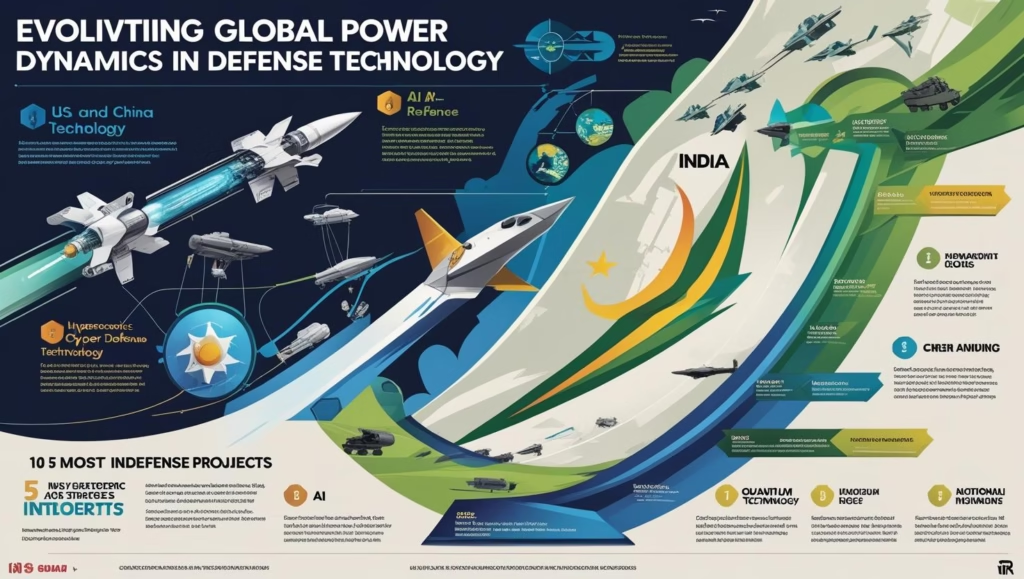AI-Based Defence Weapons: How the World’s Militaries Are Shaping the Future of Warfare
Introduction: The Dawn of AI in Modern Warfare
Imagine a battlefield where decisions are made in milliseconds, drones fly in perfect formation without human pilots, and surveillance systems can spot threats before they even emerge. This isn’t science fiction-it’s the reality that artificial intelligence (AI) is bringing to modern militaries around the world. As nations race to harness the power of AI, the stakes are higher than ever, with global security, ethics, and technological supremacy hanging in the balance.
AI-based defence weapons are revolutionizing how wars are fought and won. From autonomous drones to AI-driven command centers, these technologies promise greater efficiency, precision, and speed. But they also raise pressing questions: How effective are these systems in real combat? What ethical challenges do they pose? And how are different countries approaching this rapidly evolving frontier?
In this blog, we’ll take a deep dive into the AI defence strategies of the United States, China, Russia, India, Israel, South Korea, and leading EU nations. We’ll explore their cutting-edge technologies, real-world effectiveness, and the global debate over the future of autonomous warfare.
United States: Leading the Charge in AI Military Innovation
Main AI-Based Defence Systems
The United States is widely recognized as a pioneer in military AI. The Pentagon’s Project Maven uses machine learning to analyze drone footage, identifying objects and potential threats with unprecedented speed. The U.S. Air Force’s “Loyal Wingman” program deploys autonomous drones to support manned fighter jets, while the Navy is experimenting with AI-driven unmanned submarines and surface vessels.
Key Features and Innovations
- Autonomous Target Recognition: AI systems can instantly distinguish between civilians and combatants, reducing collateral damage.
- Predictive Maintenance: AI algorithms forecast equipment failures, improving readiness and reducing costs.
- AI Command and Control: Real-time data fusion and decision support for battlefield commanders.
Effectiveness and Efficiency
AI has dramatically improved the speed and accuracy of intelligence gathering and targeting. In simulated exercises, AI-enabled drones have outperformed human pilots in dogfights. Predictive analytics have reduced equipment downtime by up to 30%.
Ethical Concerns and International Response
The U.S. faces ongoing debates about accountability for AI-driven decisions, especially in lethal autonomous weapon systems (LAWS). The State Department’s Political Declaration on Responsible Military Use of AI reflects a commitment to human oversight, but critics argue more transparency is needed.
China: Ambitious, Cautious, and Rapidly Advancing
Main AI-Based Defence Systems
China’s military, the People’s Liberation Army (PLA), is investing heavily in AI for both conventional and asymmetric warfare. Notable projects include the “Sharp Sword” stealth drone and AI-powered cyberwarfare platforms. China is also developing swarm drone technologies capable of overwhelming enemy defenses.
Key Features and Innovations
- Swarm Intelligence: Dozens of drones coordinate autonomously to execute complex missions.
- AI-Enhanced Cyber Operations: Machine learning algorithms detect and exploit network vulnerabilities.
- Facial Recognition Surveillance: Massive AI-driven monitoring of borders and sensitive regions.
Effectiveness and Efficiency
China’s AI systems have demonstrated impressive capabilities in military exercises, especially in electronic warfare and surveillance. However, technical challenges remain in fully autonomous combat systems, as acknowledged in the White Paper of AI Standardisation.
Ethical Concerns and Global Perception
China emphasizes “human-in-the-loop” control but faces skepticism over its use of AI for domestic surveillance and potential escalation in the South China Sea. International observers worry about the lack of transparency and the risk of AI-driven arms races.
Russia: AI on the Battlefield and in Electronic Warfare
Main AI-Based Defence Systems
Russia has deployed AI in various forms, from the “Marker” unmanned ground vehicle (UGV) to advanced electronic warfare systems that jam enemy communications. AI is also used in missile guidance and battlefield robotics.
Key Features and Innovations
- AI-Driven Electronic Warfare: Disrupts enemy command and control networks.
- Autonomous Ground Vehicles: Used for logistics, reconnaissance, and direct combat.
- Hybrid Warfare Integration: AI coordinates cyber, electronic, and kinetic operations.
Effectiveness and Efficiency
In the Ukraine conflict, Russian AI systems have shown both strengths and weaknesses. While electronic warfare has disrupted enemy operations, AI algorithms have struggled with the unpredictability of real combat environments, as detailed in the EU Parliament’s Defence AI Briefing.
Ethical Concerns and International Response
Russia’s lack of transparency and reported use of AI in controversial operations have drawn criticism from the international community. There are calls for greater regulation and oversight, especially regarding autonomous lethal systems.
India: Innovating for Security and Sovereignty
Main AI-Based Defence Systems
India is rapidly modernizing its military with AI-powered surveillance (like the NETRA system), autonomous drones (Rustom-2), and AI-assisted decision-making tools. Collaboration with domestic startups such as ideaForge has accelerated innovation.
Key Features and Innovations
- Cost-Effective AI Drones: Designed for surveillance and border security.
- AI-Driven Satellite Monitoring: Enhances situational awareness along disputed borders.
- Human-in-the-Loop Doctrine: Ensures human oversight in all lethal decisions.
Effectiveness and Efficiency
India’s AI systems have improved border surveillance and reduced response times to security threats. However, challenges remain in scaling up production and integrating AI across all branches of the armed forces.
Ethical Concerns and International Response
India advocates for responsible AI use and supports international efforts to regulate LAWS, as discussed in this Carnegie India analysis.
Israel: Precision, Speed, and AI Integration
Main AI-Based Defence Systems
Israel is renowned for its advanced defense technology. The Iron Dome missile defense system now uses AI to intercept rockets more efficiently. The Harpy drone, an autonomous “loitering munition,” can identify and destroy enemy radar installations.
Key Features and Innovations
- AI-Enhanced Interception: Iron Dome’s algorithms calculate optimal interception points in real time.
- Autonomous Loitering Munitions: Drones can patrol and attack targets without direct human input.
- AI-Driven Border Surveillance: Detects and responds to threats along sensitive borders.
Effectiveness and Efficiency
Israel’s AI systems have achieved over 90% success rates in intercepting incoming threats, saving countless lives during recent conflicts.
Ethical Concerns and International Response
Israel maintains strict human oversight, but the use of autonomous munitions in densely populated areas remains controversial.
South Korea: Defending the DMZ with AI
Main AI-Based Defence Systems
South Korea has deployed the SGR-A1 sentry gun, an autonomous turret with facial recognition, along the Demilitarized Zone (DMZ). AI-powered surveillance robots also patrol high-risk areas.
Key Features and Innovations
- Automated Threat Detection: Sentry guns can identify and respond to intruders instantly.
- AI Surveillance Robots: Monitor and report suspicious activity in real time.
- Remote Human Control: Operators can override autonomous systems at any time.
Effectiveness and Efficiency
These systems have reduced the need for human patrols in dangerous areas and improved response times to security breaches.
Ethical Concerns and International Response
The potential for fully autonomous “kill decisions” has sparked debate, with human rights groups calling for stricter controls.
EU Nations: Balancing Innovation and Regulation
Main AI-Based Defence Systems
European countries are at the forefront of regulating military AI while developing advanced systems. France’s Rafale jets use AI for threat detection, while Germany focuses on modular AI platforms adaptable to various missions.
Key Features and Innovations
- AI-Driven Fighter Jets: Real-time threat analysis and targeting.
- Modular AI Systems: Easily upgraded and reconfigured for new missions.
- Emphasis on Ethics: Strong regulatory frameworks guide development.
Effectiveness and Efficiency
EU militaries benefit from advanced AI while maintaining strict oversight. However, bureaucratic hurdles can slow innovation.
Ethical Concerns and International Response
The EU is pushing for a global treaty on autonomous weapons and participates in UN talks on regulating killer robots.
Table: Comparing AI Defence Capabilities Across Countries
CountryNotable AI SystemsKey StrengthsMain ChallengesUSAProject Maven, Loyal WingmanAdvanced autonomy, rapid R&DEthical oversight, transparencyChinaSharp Sword, Swarm DronesSwarm tactics, cyber warfareTechnical reliability, trustRussiaMarker UGV, EW SystemsElectronic warfare, hybrid opsBattlefield unpredictabilityIndiaNETRA, Rustom-2Cost-effective, rapid deploymentScaling, integrationIsraelIron Dome, Harpy DronePrecision, high success ratesUrban warfare ethicsSouth KoreaSGR-A1, AI robotsAutomated border defenseKill decision controversyEU NationsRafale AI, modular systemsRegulation, ethical frameworksInnovation speed
Frequently Asked Questions
How effective are AI weapons in warfare?
AI weapons have proven highly effective in surveillance, targeting, and rapid response. Systems like Israel’s Iron Dome and U.S. autonomous drones have saved lives and improved mission success rates. However, real-world combat exposes limitations, especially when AI encounters unpredictable situations.
What are the ethical concerns with autonomous weapons?
The main concerns are accountability, the risk of accidental escalation, and the potential for AI systems to make life-or-death decisions without human oversight. International organizations like the UN Office for Disarmament Affairs are working to address these challenges.
Conclusion: The Future of AI in Defence
AI is transforming the world’s militaries, offering unprecedented speed, precision, and adaptability. Yet, as the technology advances, so do the ethical and strategic risks. The global community faces a critical choice: Will AI be a force for stability or a catalyst for conflict?
International cooperation, transparent regulation, and a commitment to human oversight are essential. The Political Declaration on Responsible Military AI is a step in the right direction, but much work remains.
What do you think? Should AI weapons be strictly regulated or even banned? How can nations balance innovation with responsibility? Share your thoughts in the comments below!
References and Further Reading:
- US Department of Defense’s AI Spotlight
- State Department’s Political Declaration on Responsible Military Use of AI
- EU Parliament’s Defence AI Briefing
- IndiaAI on AI in the Indian Army
- Carnegie India on LAWS
- UN Office for Disarmament Affairs on LAWS
- Autonomous Weapons Regulation
- UN Talks on Killer Robots
If you found this article insightful, please share it and join the conversation below!
The United States is widely recognized as a pioneer in military AI. The Pentagon’s Project Maven uses machine learning to analyze drone footage, identifying objects and potential threats with unprecedented speed. The U.S. Air
Keywords: AI defence technology, autonomous defence systems, defence innovation, defence effectiveness, defence efficiency, defence weapons features, defence ethics, defence engineering, defence intelligence, defence surveillance, defence research, defence cyber security, defence trends
Disclaimer: Transparency is important to us! This blog post was generated with the help of an AI writing tool. Our team has carefully reviewed and fact-checked the content to ensure it meets our standards for accuracy and helpfulness. We believe in the power of AI to enhance content creation, but human oversight is essential.






Hey! This is my first visit to your blog! We are a group of volunteers and starting a new initiative in a community in the same niche. Your blog provided us useful information to work on. You have done a extraordinary job!